
“How do I transition from conventional shoes to minimalist shoes?” is one of the most common questions we receive at Natural Footgear. I, Dr. Robyn Hughes, co-wrote the following article with Correct Toes inventor Dr. Ray McClanahan to address this very question. This article originally appeared on the Correct Toes blog.
Many people are aware that a transition period is required when switching from conventional shoes to minimalist shoes (now sometimes referred to as “functional footwear”). In fact, this is one of the most common topics we hear about from readers here at Natural Footgear. Most people want to know the proper protocol for transitioning to men's or women's foot-healthy footwear—shoes, boots, or sandals that are widest at the ends of the toes, have flexible soles, are lightweight, and possess no heel elevation, toe spring, or artificial arch bumps or props. Though every individual is different and has unique factors or circumstances to consider, we’ve come up with eight general suggestions to heed that are important for everyone making this transition.
And here they are:
- Take a slow, progressive approach
- Proceed in a stepwise fashion
- Allow time for adjustments to occur
- Address gait changes
- Use metatarsal pads and heel cups, if necessary
- Use Correct Toes toe spacers
- Add barefoot time to your regimen
- Perform key home care exercises
Below, we explore each of these suggestions in greater detail. Read on to learn all about how to successfully transition from conventional shoes to minimalist shoes.
1. Take a Slow, Progressive Approach

It’s perfectly normal for you to be excited about this new approach to foot health and function. After all, countless people have already benefited from foot-shaped minimalist shoes and natural foot health approaches. But it is possible to be overzealous in the adoption of this new footwear, and failing to transition slowly and properly from conventional shoes to minimalist shoes might lead to problems for some.
Consider wearing your new minimalist shoes for a very short period at first, such as 30 minutes per day, and then gradually increasing wear-time by 30 minutes per day as your feet and body adapt to the changes. If you’re a runner or walker who's using minimalist athletic shoes for the first time, consider paring back your mileage initially. As your foot and toes become stronger, you can begin wearing your minimalist shoes for longer runs or walks.
Some individuals may be good candidates for a slightly accelerated transition period. This could include runners or walkers who are experiencing significant pain while using their conventional athletic shoes or those who already spend a lot of time barefoot. If you opt to stop using conventional footwear altogether after starting in with minimalist shoes, it's particularly important to remain vigilant and monitor your feet and lower legs for signs of fatigue or strain. Know when to back off and give your feet some time to rest and adapt to the changes taking place in your tissues.
Note: It's very important to understand that minimalist shoes go hand in hand with a change in running form. Because the soles of these shoes are thin and flexible, you can't pound the ground as hard with your footfalls. Most people who switch from conventional athletic shoes to minimalist athletic shoes adopt a forefoot or “midfoot” (i.e., whole foot) strike that occurs directly underneath the body, instead of a heel strike that occurs in front of the body. This forefoot or midfoot strike is important for dissipating the ground reaction forces experienced by your feet and lower extremities when running barefoot or in minimalist shoes. Our article entitled The Shoe Cushioning Myth delves into this topic in much greater detail.
2. Proceed in a Stepwise Fashion

Many people benefit from a stepwise approach to minimalist shoes that involves a gradual transition from a built-up conventional shoe to a transitional type of shoe (such as the Lems Trail Blazer) to a true minimalist shoe. There are two main considerations as it concerns this stepwise approach:
- The sole of the foot
- The Achilles tendon
The sole of the foot is extremely sensitive, which is great for sensing the ground and making appropriate micro-adjustments during gait. But after a lifetime of wearing thick-soled shoes, the sole of the foot (including the skin, muscles, nerves, and other tissues that make up this part of the body) is not properly adapted to the ground, and being barefoot or using thin-soled shoes can be uncomfortable.
The best way to build up or condition your foot’s sole is to start with slightly thicker-soled footwear and then move to thinner-soled options over time. Note that your thicker-soled footwear selection should still possess all the other foot-healthy characteristics we recommend, specifically, a flat platform (i.e., no heel elevation, no toe spring, and no arch-propping inserts), a toe box that's widest at the ends of your toes, a flexible sole that you can easily bend or twist, and a low overall weight.
After wearing conventional shoes with heel elevation for years (or decades, in many cases), the Achilles tendon often becomes contracted, or shortened (sometimes up to three-quarters of an inch!). A shortened Achilles tendon will return to its normal length after conventional footwear is abandoned and the foot is allowed to rest on a level plane, but this process takes time. Heat, physical therapy modalities, and warming or cooling gels can help with this transition and rehabilitation.
Shifting from a shoe with heel elevation to a “zero drop” platform can place a significant amount of strain on your Achilles tendon, and overdoing it, especially at first, can cause damage and pain in this part of your body. Again, a slow, stepwise shift from conventional footwear to transitional footwear to truly minimalist footwear can make the leap to more foot-healthy shoes a more pleasant experience.
3. Allow Time for Adjustments to Occur

The changes and deformities that happen in feet and toes exposed to conventional footwear take many years to occur. It’s no surprise, then, that positive, healthy changes and true foot and toe rehabilitation will also take some time. Some people who transition to minimalist shoes do not allow enough time for the soles and the muscles in the feet and the rest of the lower body to strengthen and adapt. Transitioning to minimalist shoes will, in most cases, work your foot and lower body in a very new and unique way, leading to initial soreness and fatigue in many before the longer-term strength gains and other favorable adaptations occur. Be patient, monitor your body’s response to this transition, and take it slowly! Changes are afoot.
4. Address Gait Changes

It’s common for gait changes to occur when switching from conventional shoes to minimalist models. Most people who wear conventional shoes are heel-strikers (thick, elevated heels make it almost impossible to be anything but). People who wear minimalist shoes, on the other hand, often first contact the ground with the forefoot or the entire foot all at once—a very different gait pattern that has wide-ranging effects throughout the body. This change in gait pattern tends to happen naturally upon moving to footwear with a completely flat (and thin) support platform. But sometimes there is a lag in gait changes that occurs during this transition, and some people still continue to heel strike or pound or slap the pavement even after shifting to minimalist footwear.
Heel striking in minimalist shoes may cause some heel discomfort, as there is no longer the same level of cushioning in place to seemingly absorb the shock. Using heel cups (please see the next section for further details about heel cups) can be helpful in reducing or preventing this discomfort. Another helpful approach is to pay a lot of attention to how your feet are contacting the ground with every step or stride you take. Basically, just feel and listen to your body and avoid distractions (chatting with friends, listening to music, etc.) while you’re walking or running during this transition period. Strive to practice your “quietest” possible run, paying special attention to the location and force of your footfalls while making as little sound as possible every time your foot contacts the ground. Our article entitled Three Meditations for Running offers further thoughts on things you can do to ensure a healthy and optimal running gait.
5. Use Metatarsal Pads & Heel Cups, if Necessary

Using Pedag metatarsal pads or Strutz Pro foot pads is an unobtrusive way to restore proper muscle and tendon balance in your foot and lower leg. Metatarsal pads also reposition your forefoot fat pad back to a location that cradles and protects your metatarsal heads. The metatarsal heads are a common pain point in many people with foot problems, and they are a common location for stress fractures in those who habitually slap the ground when running (a regular occurrence in those who wear conventional athletic shoes). Metatarsal pads, if placed properly, can also help spread your transverse foot arch, which helps take pinch pressure off the sensitive structures that run through the ball of your foot, including nerves and blood vessels.
SHOP PEDAG METATARSAL PADS SHOP STRUTZ PRO FOOT PADS

Heel cups are another helpful (and unobtrusive) natural foot product that alleviates point tenderness in the heel—something that occurs from time to time in minimalist shoe adopters. This point tenderness can happen early in the transition phase or later on, after you’ve been wearing minimalist shoes for a period of time. Point tenderness in the heel is relatively rare in minimalist shoe wearers, but it can be uncomfortable and, in some cases, lead to abandonment of natural foot health approaches. A simple heel cup is often enough to address this discomfort and keep you in footwear that lets your foot function the way nature intended. Setbacks may happen from time to time, but in most cases, there is usually a simple solution or tweak possible that can help you stay on the path toward optimal foot health.
SHOP HEEL CUPS
6. Use Correct Toes Toe Spacers

Using Correct Toes is one of the most powerful ways to support the transition from conventional footwear to minimalist shoes. Correct Toes naturally curbs overpronation and enables proper bodyweight distribution throughout your foot. These comfortable and durable toe spacers also encourage a natural strengthening of the muscles and tendons that act on your feet and toes. Correct Toes works well in minimalist shoes with anatomically appropriate toe boxes (i.e., toe boxes that are widest at the ends of the toes, not at the ball of the foot). In fact, all of the men's and women's footwear we feature on the Natural Footgear site is Correct Toes compatible. To learn more about this helpful toe spacing device, please see our article entitled Top 10 Benefits of Correct Toes.
SHOP CORRECT TOES
7. Add Barefoot Time to Your Regimen

Adding some barefoot time to your foot health and minimalist shoe transition regimen can be extremely helpful in ensuring a smooth and injury-free shift. Spending at least some time barefoot, even if only around the house, can help condition the soles of your feet and strengthen your foot and toe muscles, accelerating the foot adaptations that occur with Correct Toes use and minimalist shoe wearing in a safe and constructive manner. If appropriate, you may also consider walking outdoors in your bare feet, weather permitting, starting with as little as one block or a few hundred yards/meters. Consider walking barefoot on surfaces that offer good visibility, such as a running track or the hard-packed sand at a beach, so that you don’t inadvertently step on any debris (grass can hide sharp objects).
8. Perform Key Home Care Exercises

Performing certain exercises at home (or at work) can help with your transition from conventional to minimalist shoes. The most helpful exercises you can perform include the Toe Extensor Stretch, the Big Toe Stretch, the Hammertoe Stretch, the Ball Rolling Exercise (we like using the Naboso Neuro Ball for this one), and other exercises that help strengthen your intrinsic foot muscles. These exercises, when performed consistently, help relax tight muscles and tendons and build long-term foot strength and resiliency. For the best possible outcome, perform these exercises at least several times each day.
SHOP NABOSO NEURO BALL

Using BlackBoard training tools, including the BlackBoard Basic (pictured above, with MobilizationBars), ToeBands, and Meta Trigger, is a fantastic way to improve foot strength, enhance foot and toe joint mobility, train important motor skills, hone balance and agility, develop healthy foot and toe movement patterns, and activate and stabilize key structures throughout your foot and lower leg. For these reasons, and more, BlackBoard training tools are very helpful in supporting the transition to minimalist footwear and can help you build a better (i.e., more capable and resilient) foot. Consider incorporating these helpful tools into regular foot care regimen, both during your transition to minimalist shoes and beyond.
SHOP BLACKBOARD TRAINING TOOLS
Whole Body Barefoot by Katy Bowman

In addition to the transitioning strategies mentioned above, we have found that reading Katy Bowman's Whole Body Barefoot is very helpful in making the leap to more foot-healthy footwear. Indeed, Whole Body Barefoot addresses the topic of how to safely and successfully transition from conventional footwear to minimalist footwear. This well-written and insightful guidebook incorporates 25 unique exercises designed to build more supple and resilient feet and help prevent foot injuries in all those who adopt flat, wide, and flexible shoes. Take your knowledge of natural foot health—how to build it and how to preserve it—to the next level by reading this excellent book by Katy Bowman, M.S.
PURCHASE BOOK
Patience, Diligence & Perseverance: The Keys to a Successful Transition

Using healthy minimalist shoes—shoes that are widest at the ends of your toes, have a flexible sole, are lightweight, and possess a completely flat support platform—offers the possibility of profound and enduring foot health benefits. Like most aspects of health, it’s always best to exercise caution and restraint in transitioning to a new and natural approach. Your feet and body are amazingly adaptable and will indeed strengthen if treated appropriately. But this remarkable adaptation works best with patience, diligence, perseverance, and a progressive approach. It is an investment well worth making, as it will pay foot health dividends for an entire lifetime. If you have any questions about any aspect of transitioning from conventional shoes to minimalist footwear, please contact us.
And now: Onward, to excellent foot health!
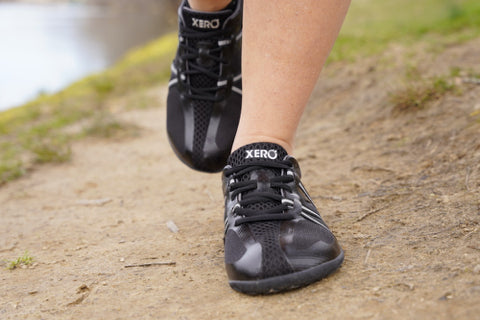 Dr. Robyn and I are often stopped on hiking and running trails by fellow outdoor enthusiasts who notice our unique footwear choices. With puzzled looks on their faces, they ask us how we avoid spraining our ankles in such minimalist footwear on such uneven terrain. The truth is, minimalist shoe wearers are at a distinct advantage when it comes to avoiding dreaded—and often temporarily debilitating—ankle sprains. But not all minimalist...
Read more
Dr. Robyn and I are often stopped on hiking and running trails by fellow outdoor enthusiasts who notice our unique footwear choices. With puzzled looks on their faces, they ask us how we avoid spraining our ankles in such minimalist footwear on such uneven terrain. The truth is, minimalist shoe wearers are at a distinct advantage when it comes to avoiding dreaded—and often temporarily debilitating—ankle sprains. But not all minimalist...
Read more















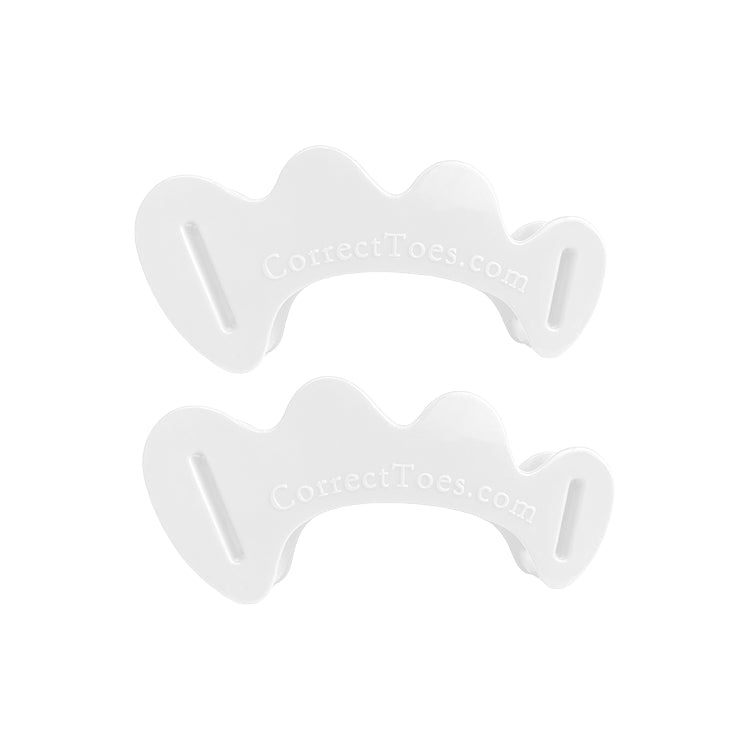

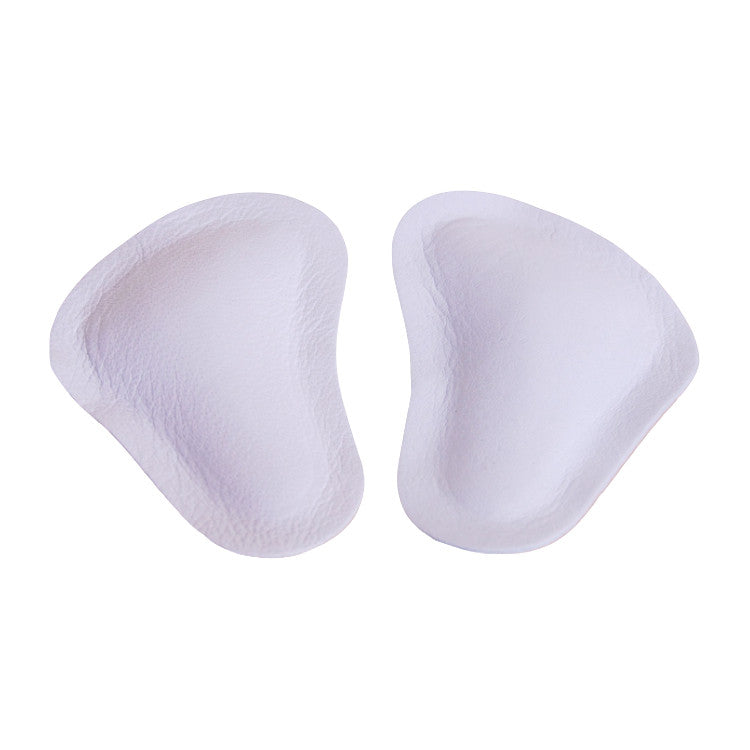
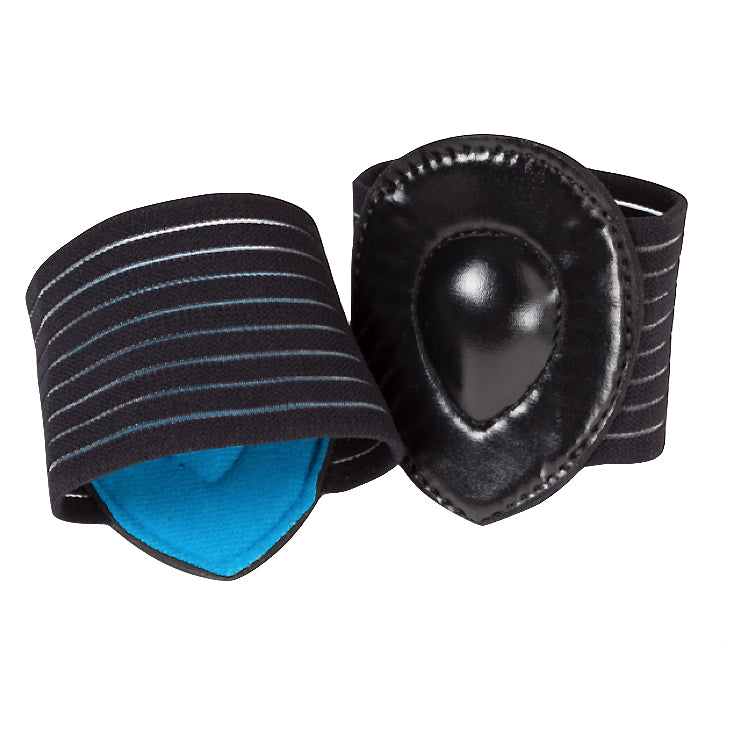
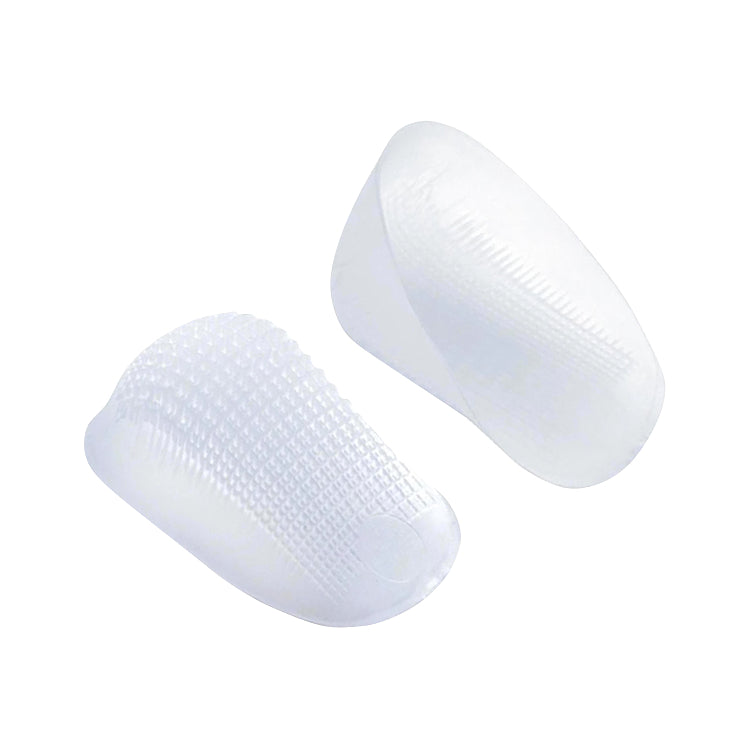
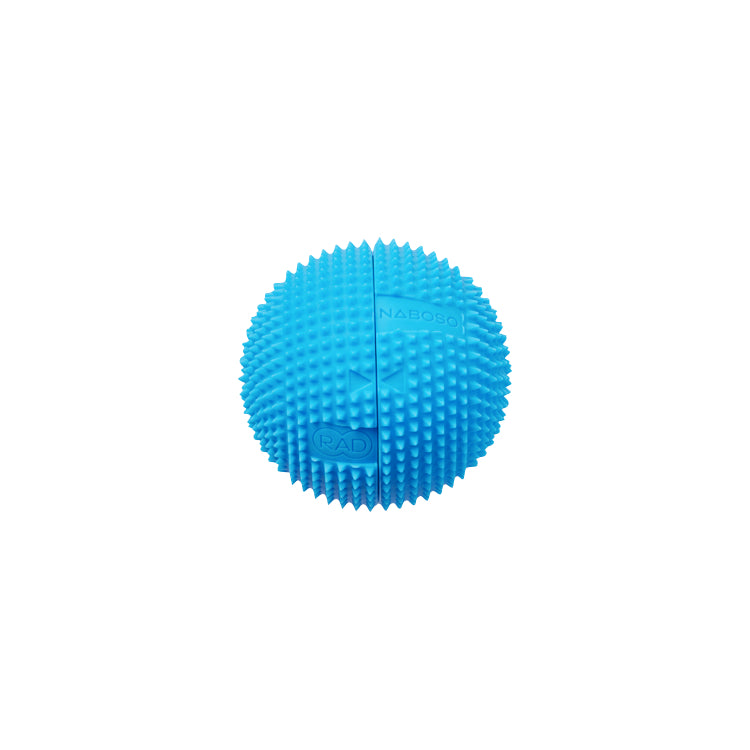

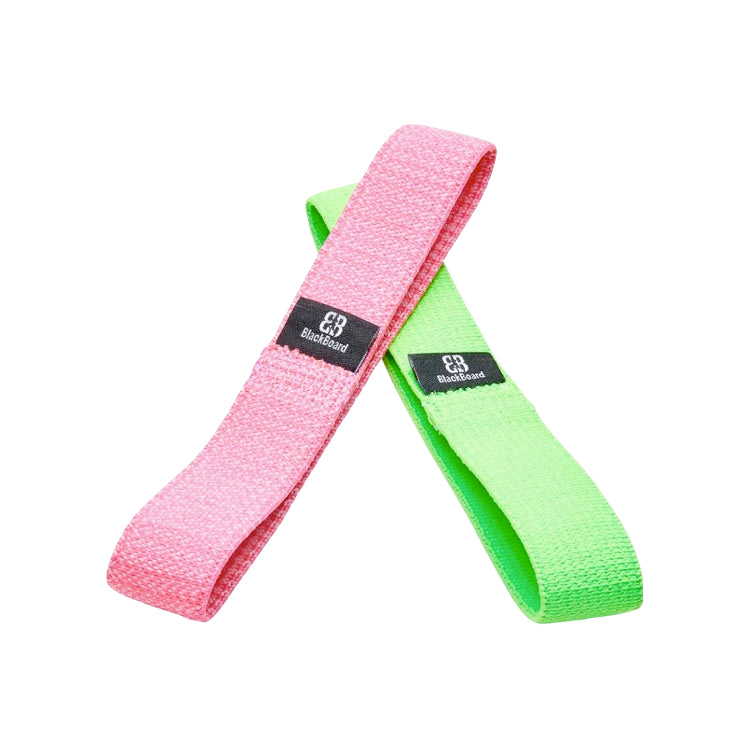
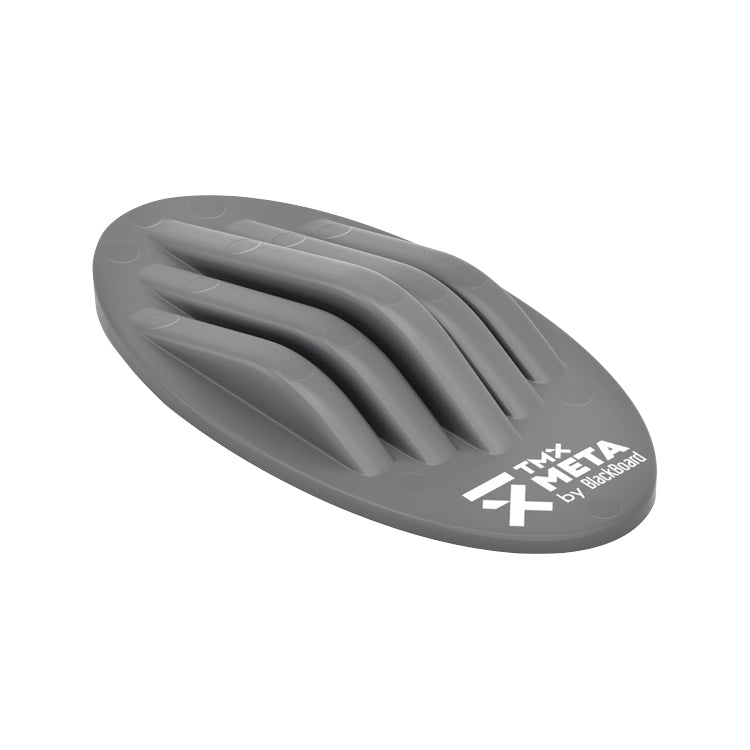
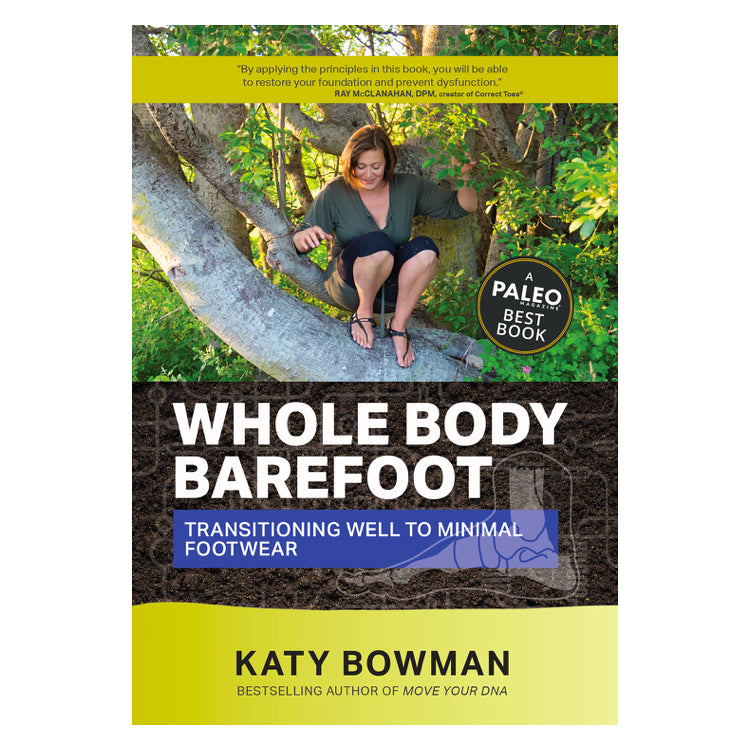
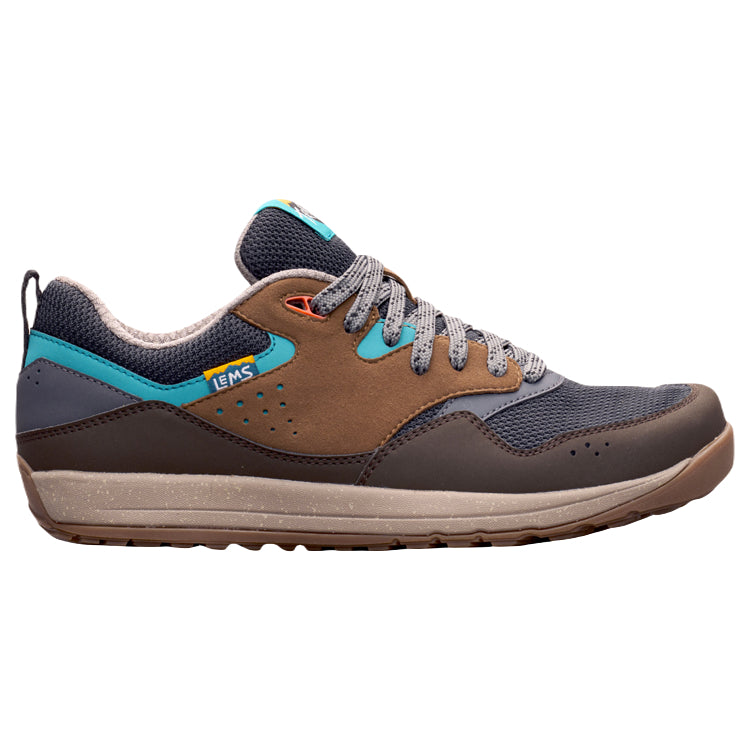
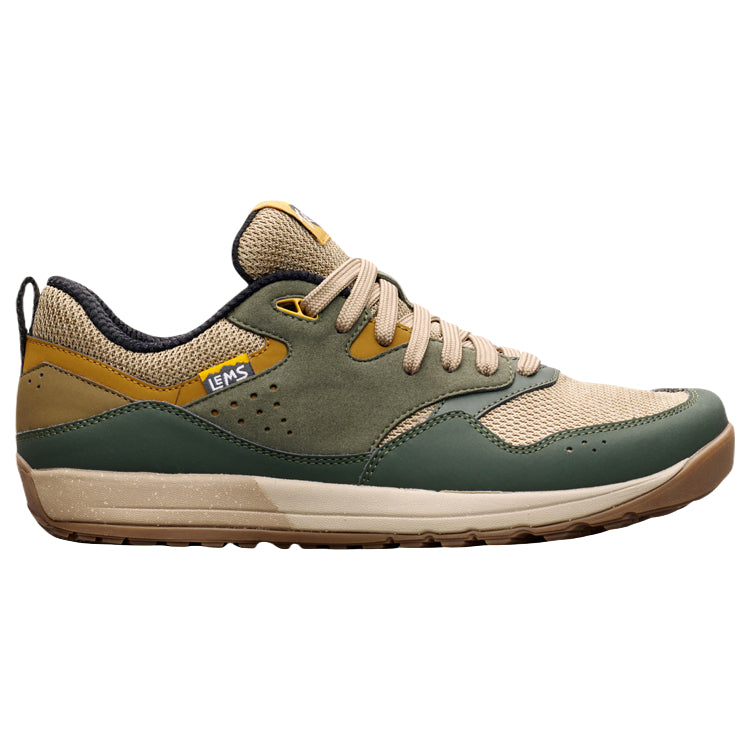


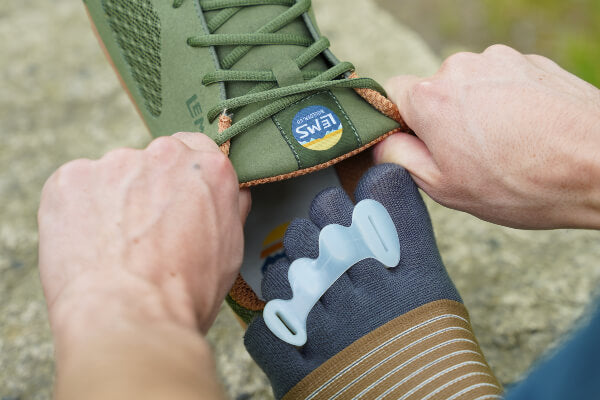
I received my first pair of minimalist shoes 1 week ago and have worn them almost exclusively since then, for treadmill, hiking, and everyday use. I haven’t experienced any of the things described in the article. I like the feel of the ground and the lightness of the shoes. The only side effect I have experienced is slight stretching pain in my calf muscles. I wore my old shoes to the gym by mistake this morning and didn’t like them at all. Is a transition period necessary for everyone?
Hi, Karen,
Thank you for your question. And thank you for providing some history for us! We’re always happy to hear about individuals who are successfully transitioning to foot-healthy footwear. Calf soreness is quite common among individuals transitioning to minimalist footwear (especially in the lower portion of the calf). In our experience, this transition period is a necessity for most, and we often recommend regulated use for individuals who are undergoing the initial change. As the feet and legs strengthen and adapt, the symptoms usually cease, and this is a good time to fully integrate minimalist footwear into your activities (and hopefully experience the joys of uninhibited natural foot function!).
If you have any further questions or concerns, just send them our way!
Kind Regards,
Andrew Potter
Good article. I am trying to figure out how quickly I can transition to wearing minimalist (Altra) shoes, especially when running trails. I have been mostly wearing zero drop shoes for everyday wear for a few months and a 10 mm drop racing flat for running. Everyday I do stretching exercises for running. One complication that I have is that about 6 weeks ago I hit a root buried in leaves while running and fractured the second bone in my big toe. So, I had to take a month off from running and my toe is still stiff. My podiatrist said that my X-rays were good, but recommended a running shoe with a stiffer sole. However, I now seem fine while running. I was a competitive runner in high school and college and now at 67, I want to get my 10k time under 45 minutes. My plan, which started today, is to wear my Altra shoes for warmup and a mile or two and then to switch to the racing flats for longer or faster running.
Hi, Bill,
Thank you for your message. We’re happy to hear that you’re planning to transition to minimalist footwear! It’s difficult for us to recommend an exact amount of time needed for the transition, as all individuals respond differently to these types of changes. We often recommend transitioning to a minimal-drop shoe before fully engaging with zero-drop, but in your case, it seems as though you’re already on your way. Your plan to wear them for a warmup before switching to your racing flats sounds like a good idea. The most important thing is to listen to your body and allow proper healing time if and when soreness occurs.
We hope this has been helpful! Please keep us updated on your progress, and if you have any further questions or concerns, please do send them our way!
Kind Regards,
Andrew Potter
Do you have any videos or animated films that actually show visually the way the foot is supposed to make contact with the floor when walking?
Hi, lotus,
Thank you for your question. This is one of our favorite pages for viewing different kinds of foot strikes:
www.barefootrunning.fas.harvard.edu/4BiomechanicsofFootStrike.html
This page is maintained by Professor Daniel Lieberman, a leader in the field of barefoot biomechanics.
Cheers,
Marty Hughes, DC
Thanks for all the great info, however I am still not sure of which shoe I should buy if all I want to do is walk and perhaps some mild hiking. Do I need to purchase one style shoe and then transition to another style? Please advise.
Thanks,
Marilyn
Hi, Marilyn,
Thank you for your message. The Lems Boulder Boot (www.naturalfootgear.com/pages/lems-boulder-boots) is a great option for both activities that you mentioned. The Lems Primal 2 (www.naturalfootgear.com/pages/lems-primal-2-shoes) is another fantastic option. Both models are lightweight, flat from heel to toe, and possess a toe box that encourages natural toe splay. If you’re used to wearing conventional footwear, you may want to consider Altra shoes (www.naturalfootgear.com/pages/altra-shoes) as well, as these are great transitional shoes, especially for folks participating in outdoor activities.
Kind regards,
Marty Hughes, DC
I have had two surgeries for a neuroma. I’m studying various options to relieve pain.
Hi, Sherry,
Thank you for your message. And thank you for checking out our article. To help guide you in your transition to minimalist shoes and to help you better understand natural approaches to neuromas, I have included some resources here:
Neuromas:
www.naturalfootgear.com/blogs/education/17888848-neuromas
Neuromas Email Course:
www.naturalfootgear.com/pages/do-you-have-foot-pain
Neuromas and Natural Foot Health:
www.naturalfootgear.com/blogs/education/17888880-neuromas-natural-foot-health
Six Ways to Restore Foot Health After Surgery:
www.naturalfootgear.com/blogs/education/17914760-six-ways-to-restore-foot-health-after-surgery
Neuromas: Conventional vs. Natural Approaches:
www.naturalfootgear.com/blogs/education/17888868-neuromas-conventional-vs-natural-approaches
Please do let us know if you have any additional questions!
Kind regards,
Laura Trentman
I tried to convert to barefoot shoes but I seem to have some overpronation issues that cause pain in my hips. Do you have any suggestions on exercises to fix the pronation?
Hi, Chris,
Thank you for your comment and question. When it comes to pronation, I think it’s important to first understand what pronation is and what causes overpronation. This video is extremely helpful on both counts:
www.naturalfootgear.com/blogs/education/75219013-pronation-vs-overpronation
So, overpronation occurs when the big toe is forced into a deviated position by conventional footwear. It’s important to note that even a lot of “barefoot” or minimalist shoes possess tapering toe boxes, and so even though they are minimalist in all other respects (i.e., lightweight, zero drop, etc.), they may still not be foot-healthy.
My suspicion is that your experience may have been different had your shoes possessed a sufficiently wide toe box to allow for natural toe splay. Proper toe alignment (especially proper big toe alignment) enables natural arch support and helps prevent overpronation.
In terms of exercises to help the overpronation issue, a couple of my favorites include:
Big Toe Stretch:
www.naturalfootgear.com/blogs/education/17856416-big-toe-stretch
Foot Arch Strengthening Exercise:
www.naturalfootgear.com/blogs/education/foot-arch-strengthening-exercise
I hope this info helps!
All best,
Marty Hughes, DC
Hi. I’ve been reading all of your information and courses. I feel like I’m ready to put forth the effort in transitioning to a minimalist shoe to help correct my bunion and alleviate the pain of my chronic plantar fasciitis. I live in a very hilly area. How will the hills affect my transition? I won’t be running due to my osteoarthritis and the severe pain in my heels, just walking. Also, can any of the shoes you promote be worn to play tennis?
Hi, Sandy,
Thank you for your comment. We’re happy to hear that you’re transitioning to more minimalist and foot-healthy shoes!
There are some very important factors to consider when making the transition, and the type of activity and terrain definitely come into play. Walking up and down hills is significantly more strenuous than walking on the flats, and it can take some time for the proper adaptations to occur in the lower leg, especially as it concerns the Achilles tendon and the muscles and other tissues near the shin (not to mention the foot itself).
Patience is key throughout the transition period, so we’d recommend wearing your new shoes on flat surfaces only and for short periods of time at first. As your feet and lower legs strengthen and you gain foot and toe flexibility, you can increase the amount of time you wear the shoes and take casual walks up and downhill.
Any of the athletic shoes we offer can be a great option for tennis, but again, we wouldn’t recommend wearing them for athletic activities until you’ve comfortably made the transition to minimalist footwear. You can view all of our women’s athletic shoe options by clicking this link:
www.naturalfootgear.com/collections/womens-shoes
Be sure to check out the info under the “Sizing” tab on each individual product page before ordering.
I hope this information has been helpful. If you have further questions throughout the transition process, please don’t hesitate to let us know. We’re happy to help!
Kind Regards,
Andrew Potter
I need a shoe that has a wide toe box (for hammertoes) and a thin sole. Plus they must be lightweight. I have severe neuropathy and have difficulty walking with a thick-soled shoe. I also need to wear a shoe that has a narrow heel area. Do you make a shoe like this?
Hi, Linda,
Thank you for your message. We have a number of footwear options that fit your criteria. In Altra shoes, we offer the Vali and the Escalante, both of which have very wide toe boxes and a relatively narrow heel:
www.naturalfootgear.com/collections/womens-altra-shoes
In Lems shoes, we offer the Primal 2 and Boulder Boot. The Primal 2 is excellent for a variety of activities, including walking, gym workouts, hiking, and general everyday use. The Boulder Boot is an extremely versatile and minimalist boot that can be worn hiking or around town:
www.naturalfootgear.com/collections/womens-lems-primal-2-shoes
www.naturalfootgear.com/collections/womens-lems-boulder-boots
We also carry the Ahinsa Ananda Ballerina, which is a dress shoe, or a more stylish everyday shoe. The Ballerinas have a very thin sole in addition to the other features you’re looking for:
www.naturalfootgear.com/products/ahinsa-ananda-ballerina-black
Also, if you’re having trouble finding shoes with a tight enough fit in the heel, we’d recommend trying Tuli’s heel cups. These heel cups are helpful for a variety of foot problems, and they can also serve to provide a more snug and comfortable fit in the heel. You can find Tuli’s heel cups here:
www.naturalfootgear.com/products/tulis-heel-cups
I hope this information is helpful! Be sure to check out the “Sizing” tab on each individual product page, as some footwear models are sized differently than others. If we can help with anything else moving forward, please do let us know!
Kind Regards,
Andrew Potter
Thank you so much for this article! I’ve searched far and wide, and this has been the most thorough and informative resource that I’ve found.
I desperately want to make the switch to minimalist shoes, but I am having difficulty deciding exactly when and how to transition.
Some background: I have a 7 mm (skeletal) leg length difference. I was given a heel lift in high school (I’m 33 now), and in my early twenties I got orthotics with a lift and have worn them ever since. I still had (and have) a lot of foot pain, and I was diagnosed with plantar fasciitis. I also have fibromyalgia, so sometimes it’s difficult to tell the difference between my everyday average pain and pain I can do more to correct.
My question is, would/should my body adapt to not having that 7 mm lift anymore? Should I decrease the heel lift gradually? Or wear minimalist shoes, but continue to wear a lift?
Thank you for your help!
Hi, Heather,
Thank you for your comment. And thank you for your kind words about the article!
Most folks with a skeletal leg length discrepancy tend to do best with a full-length foot lift, so that the heel alone is not elevated. You might consider chatting with a local foot care provider to get additional insights about how to simultaneously manage your leg length discrepancy and your desire to transition to minimalist shoes.
Good luck to you!
Kind regards,
Marty Hughes, DC
Hello. I’ve come to find your exceptional website in searching for help for my 11-year-old son with flat feet and foot and knee pain. So much of your information is related to adults who’ve been wearing conventional shoes for decades. My son has been wearing conventional shoes his whole life, but over the past 3 years (after switching to homeschooling), he has largely gone barefoot around the house, putting his conventional shoes on to go outdoors, which usually is about 30 minutes, if he goes out at all (we live in Montana, so we have cold and snowy winters). With his mostly-barefoot living, yet relatively limited time on his feet, how should I begin? Barefoot shoes, or transitional footwear? Thank you so much!
Hi, Carol,
Thank you for your comment. And thank you for your kind words about the site! Much obliged!
I appreciate that you’re looking out for the well-being of your son, and that you have his long-term foot health in mind; that’s an amazing gift to give to your child! The good news is that kids’ feet are remarkably adaptable, and, though it always pays to introduce any new thing slowly and in a measured way, it’s likely that he’ll be able to make the jump to foot-healthy shoes with relative ease.
A lot of the shoe companies that we feature on our site include at least one or two options for kids, and there are other companies out there (e.g., Splay Shoes, Wildling Shoes, Softstar Shoes, etc.) that primarily cater to young sets of feet. If you find a shoe model for your son that you think has potential, please don’t hesitate to reach out to us to get our thoughts on it.
Kind regards,
Robyn Hughes, ND